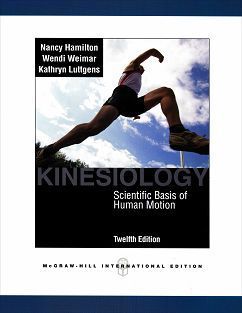書籍分類

Kinesiology: Scientific Basis of Human Motion 12/e
作者:Nancy Hamilton, Wendi Weimar, Kathryn Luttgens
原價:NT$ 1,200
ISBN:9780071086431
版次:12
年份:2012
出版商:McGraw-Hill
頁數/規格:622頁/平裝單色
版次:12
年份:2012
出版商:McGraw-Hill
頁數/規格:622頁/平裝單色
內容介紹 本書特色 目錄 作者介紹
- Description
Since the 1950s, Kinesiology: Scientific Basis of Human Motion has remained the definitive kinesiology text for college students. The twelfth edition continues the text & tradition of examining human motion through the integrated presentation of anatomy and biomechanics and applying that knowledge to a wide variety of motor skills. This edition retains the text & strong coverage of physiology combined with current scholarship in biomechanics as applied to motor skills.



